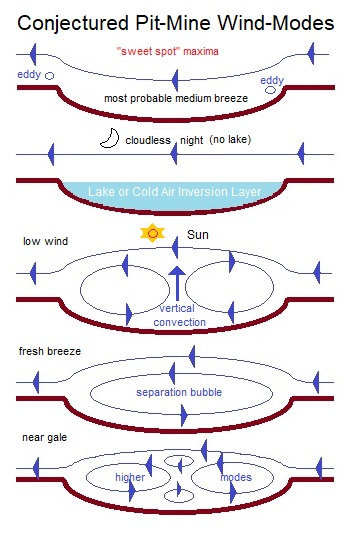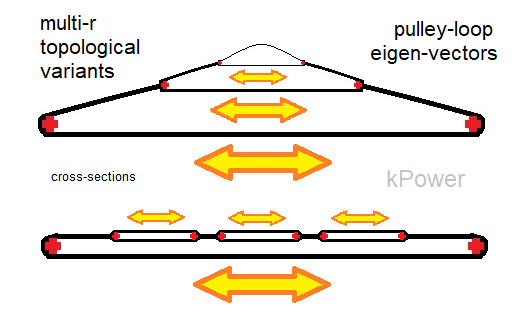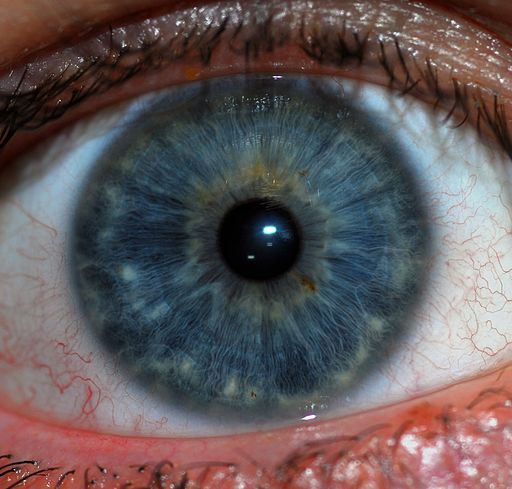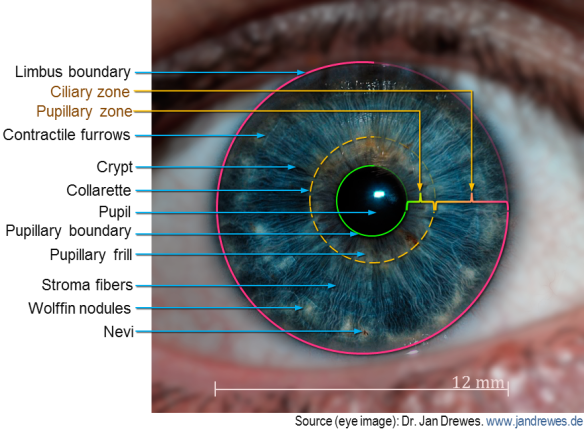Multi-r
Topological-Dynamics Notes
(incl. new radial step-tow variant)
(incl. new radial step-tow variant)
- 3r
- LSM :: Lattice Spring-mass Models or Lattice Spring Model(s) (note, early in our forum we have used minorly "LSM" for line-speed multiplier; context should make the acronym obvious)
Send
AWE notes and topic replies to editor@upperwindpower.com
Yes, Max, we should start with the most powerful multi-physics solver available.
Los Alamos Lab is under US DOE. Joe and I will make requests to mobilize them for AWE R&D.
NREL developed KiteFast CFD Solver with GoogleX-Makani, but it is poorly documented and supported.
Two early non-CFD analytic calculations would be golden:
1) scalability of an AWES network to GW "extreme-scale"
2) effective aerodynamic scale-invariance, based on non-dimensional low-velocity at extreme-scale
P.S Re: Open-Source CFD Solutions
P.S.:
Two open-source CFD solvers I allmost forgot to mention, which are
developed at Los Alamos National Labs (and by that support massive
parallelism):
- flecsale ( a dynamic-mesh multigrid solver, very flexible) . The most
prominent showcase was the asteroid impact simulation
and
-flecsph https://github.com/laristra/fl
solver.
Even if they are intended to be used for nuclear explosions ,supernovas
and neutron stars, why not redirect their application to something more
civil in nature ?
Re: Open-Source CFD Solutions
Unit-kites
within a lattice can be most-efficiently modeled by a
state-machine-automata look-up table. This would cover lattice units at
various wind velocities and load-demands. The overall "metakite" (kite
of kites) is what needs careful CFD solving. At mega-scale, given constant most-probable-wind-velocity, Euler Equations are increasingly realistic CFD approximations.
Suggesting
a lattice will support multiple bulk harmonic modes to ranging over the
IO dimensions, to be processed mechanically by the PTO (power take-off)
network at the legs, or under the lattice. Upwind vectors of an
iso-lattice are mostly static load and PTO vectors are crosswind
aligned. Turbulence can in principle be harvested by local
opportunistic response of the mesh, with a sufficiently granular PTO
network. Analog Phonon view of bulk field energy packets is the most
advanced representation. These packets are coupled wind-field and LSM
waves.
A
highest-value LSM multi-r prediction is any compelling >10GW scale
CFD or analytical validation. Comparative vetting of competing AWES
architectures is more complex and less urgent. Most architectures do
not even scale to 1MW well. Early numeric evidence of GW-scale AWES
meta-units will be revolutionary.
Re: Open-Source CFD Solutions
Dear Max,
Both
CFD solvers that you refer to seem to be quite capable. SU2 indeed
looks very solid with extensive capabilities. I suppose that seamless
operation with mesh deformations should be quite useful when
considering kite membrane structures. However, I'm not sure if dynamic
mesh topology changes are needed in the case of testing the
behaviour / motion of airborne structures (unless perhaps the
possibility of structural element detachment needs to be considered). I
assume that OpenFOAM should also be quite sufficient to serve as a
simulation testbed for evaluating AWE structure performance at least on
a level of preliminary form-finding studies.
Your
suggestion to consider particle-based CFD solvers is quite interesting.
I was only aware of such use mainly in CGI (e.g. metaballs to visualise
liquid behaviour), but after your suggestion, I came across
the Smoothed-particle hydrodynamics method. It seems that it could
offer advantages for the AWE kite-lattice case as it is a meshless
method with no boundary condition requirements and could therefore be
more suited for free standing airborne structures that can be
modelled as mass-spring systems. Also, a particle-based method could
prove to be more "elegant" and efficient as potentially a common solver
could be used for simulating both wind and AWE structure behaviour. If
there is an impact to precision when compared to traditional
Navier-Strokes-based CFD methods, this may not be of consequence
in cases where a preliminary evaluation mechanism is needed to test
diverse AWE lattice structure configurations.
I
also looked into the Discrete Element Method (DEM) which is a general
formalisation of particle systems (and of course particle-spring
systems). It seems that there has been substantial work in the coupling
of DEM with CFD, which, to my understanding, should be the closest
thing I have seen to the discussion we have been having (look for
the term CFD-DEM). In fact, there seem to be a lot of initiatives that
couple OpenFOAM with DEM solvers (e.g. LIGGGHTS and CFDEM project, some videos here and here). Might be worth looking into.
Best regards,
Tassos
Sept. 23, 2020, post by Dave Santos
Re: Open-Source CFD Solutions
Great to see Prof.Dr. Gauger's Group's role in SU2 CFD development. AWE is a wonderful challenge to show its potential. Nothing is currently hotter than SU2 promises to become. Maybe everyone in AWE should migrate to SU2, to take the "in-house" advantage.
Re: Open-Source CFD Solutions
Great to see Prof.Dr. Gauger's Group's role in SU2 CFD development. AWE is a wonderful challenge to show its potential. Nothing is currently hotter than SU2 promises to become. Maybe everyone in AWE should migrate to SU2, to take the "in-house" advantage.
There are tools that already claim to integrate OpenFoam with SU2. Sample-
FEATool Multiphysics 1.12 - SU2 CFD Solver MATLAB Integration and GUI
======= misc related notes =======
Biomimetic
Similarity Case- Starling Murmuration as a MW scale flying LSM analog.
These birds are winged-masses "cybernetically tethered" by visual
reference and suction and compression gas-spring forces between them.
They obviously develop coherent lattice waves at high efficiency,
turning large aggregate mass quickly at high velocity. The whole mass
sustains in flight, despite gravity, with plenty of free-energy to
maneuver. While such raw complexity is computationally intractable at
the moment, we can be confident in this existence-proof of flying LSM
dynamics we seek to engineer.
Flight of the Starlings: Watch This Eerie but Beautiful Phenomenon | Short Film Showcase
And
https://tinyurl.com/PitWinds001

Hamback CFD Approximation
CFD is
not too insightful for anyone who visualizes flows well beforehand, but
can be convincing for those who do not. Here we see the flow past a
cavity roughly like the Hamabach Pit Mine. I took a generic CFD view
of flow past a hemispheric hole and squashed it. It shows the same
nominal bulk features previously guessed. There is the lee-rotor votex
behind the windward lip, followed a weak Coanda-like deflection
downward across the center of the hole, creating a "sweet-spot" in the
form of a velocity-maxima with deflection upward at the leeward lip.
These features appear in the prior Conjectured Wind-Modes "most
probable medium breeze". Other less-probable velocities would create
unstable mixed modes that are roughly approximated by CFD sims of flow over other cavity cases, like the sequence of modes over golf-ball dimples.
Adapted Version- IMAGEYETSOON https://tinyurl.com/PitWindsConjectures001
Original MAGEYETSOON https://tinyurl.com/WindPitGraphic
Original MAGEYETSOON https://tinyurl.com/WindPitGraphic
https://tinyurl.com/PitWinds001

The above modes are central-cross-sections.
Side modes are trailing line-vortices.
Downwind wake is shed horse-shoe vortices.
Video:
Flight of the Starlings: Watch This Eerie but Beautiful Phenomenon | Short Film Showcase
Trainler. A full-length is via a rental, etc. www.janvanijken.com "mystery is how it flies in murmurations"
Flight of the Starlings: Watch This Eerie but Beautiful Phenomenon | Short Film Showcase
Trainler. A full-length is via a rental, etc. www.janvanijken.com "mystery is how it flies in murmurations"
Thank you for your feedback. Happy to hear you found the
work in the video I shared to be interesting and relevant. Just to note
that this was an early experiment with spring-mass simulations and it
was tuned to accommodate the particular use case. In principle, a
mass-spring simulation model can be elaborated to incorporate more
accurate physical properties and quantities, including drag, material
elasticity/rigidness, etc. Simple external forces can be modelled
fairly easily (e.g. in that example there was a "reverse gravity" force
applied to give the dome its shape and also spherical objects were used
to locally "repel" nodes to form local cavities). Of course, any
network topology can be implemented in such simplified models, either
"hard-coded" (manually designed and specified) or potentially
rule-based generative models can be applied to yield multiple
variations. However, simulating wind dynamics and how this affects
load-bearing surfaces (e.g. kite membranes) in a spring-mass simulation
is another matter and unless very simplified models are sufficient,
coupling with a CFD model may be necessary.
Regarding
your discussion on coupling mass-spring simulations with CFD in the
separate email threads, commercial-grade CFD packages can of course be
used (like Ansys that you mention).
However, I think that the customisation of such software and its
integration is not trivial and would require the involvement of experts
in the field, while generally, relying on third-party software may also
present certain limitations in terms of possibilities, integration and
configuration. Perhaps it may be worth to consider involving the actual
developers of CFD software that would allow greater flexibility and can
lead to more customised and efficient solutions (are there any people
working with CFD at Kaiserslautern?). For example, at my lab, we have
collaborated with a Greek company that develop their proprietary CFD
solution and in the projects we've worked on, a CFD simulation is used
to simulate fire and volatile product development and this is
integrated to operate in realtime with a agent-based simulation of
human crowd behaviour that is developed by my lab. This company
have also used CFD for calculating wind load bearing on buildings (http://www.sofistik.gr/index.php?id=94 ) among other use cases. This is a paper from a previous collaborative project https://www.spiedigitallibrary.org/conference-proceedings-of-spie/9842/984216/PYRONES-pyro-modeling-and-evacuation-simulation-system/10.1117/12.2223162.short ) and this is the website of an ongoing project https://www.estia-project.gr/ (sorry it's in Greek only! maybe your browser can provide translation?)
Best regards,
Tassos
Open-Source CFD Solutions
Regarding your discussion on coupling mass-spring simulations with CFD
> in the separate email threads, commercial-grade CFD packages can of
> course be used (like Ansys that you mention). However, I think that
> the customisation of such software and its integration is not trivial
> and would require the involvement of experts in the field, while
> generally, relying on third-party software may also present certain
> limitations in terms of possibilities, integration and configuration.
> Perhaps it may be worth to consider involving the actual developers of
> CFD software that would allow greater flexibility and can lead to more
> customised and efficient solutions (are there any people working with
> CFD at Kaiserslautern?).
Nicolas Gauger's group is the main developing team of the SU2 CFD solver
(which also has some multi-physics attached), having the ability to work
with deformed meshes and optimize the shape based on smooth
deformations, however not with topology changes on cfd meshes.
I am sadly only proficient in OpenFOAM, which also supports
multi-physics and is open-source, but at lower fidelity, and in the
structural mechanics part of Simulia/Abaqus (a commercial software).
As the volume topology of a kite network is not very stable or may not
be represented by a deformed original mesh, maybe particle-based CFD
solvers would have to be used which are more flexible (however less
precise).
Best,
Max
A more simple one
ImagesForStudyTowardMinimalTest by Max Langbein
Hello,
What's your opinion about a more simple, physical, initial test for the 2-layer approach: a setup with six 4q-force-controlled motorgenerator winches, leaving out most of the complexity (and in a scale of only a few meters).
The spring-mass, etc which would be needed for actual efficient power production is not needed for a simple testing setup, where the energy production of a more elaborated efficient mechanical setup could be extrapolated.
What I know about CFD simulation that it's best for assessment of small changes in well-understood systems, given the effort needed.
Maybe that has already been done and I just did not see it.
Lower layer in blue, upper in red, sail in green.
Surely Uwe will love to work in AWE when given the opportunity. Anarete went hog-wild with an AWES com-link/tracking product line nobody demanded. He co-published this year (* more on that technical front later). His anti-coal volunteerism indicates deep motivation. ABB employment places him in the energy industry.
The Multi-r LSM concept space has an unpredictable attraction. Some will never give up their starting architectures and others will eagerly jump. Lets hope Uwe is a jumper. Even if not, Max and Tassos will find value in the 2015 paper. Uwe's SM is a kite, and that's a big leg-up.
* Digging deeper into System Identification (SI) for new posting: it is a diverse subject. The latest paper [Dief et al, 2020] is effectively AWES SUBsystem identification, with the old a-priori identification of the single-line reeling architecture. In effect, they re-identify what they already select by its data sets, and identify a state-optimization. kPower has presented SI of AWE as a whole as the Black-Box between upper-wind and the grid. By heuristic methods, we think Mult-r LSM is the prime identification. The numeric and tested validations are pending.
Adaptive Flight Path Control of Airborne Wind Energy Systems by by Tarek N. Dief, Uwe Fechner, Roland Schmehl, Shigeo Yoshida, and Mostafa A. Rushdi [Received: 26 November 2019 / Revised: 10 January 2020 / Accepted: 21 January 2020 / Published: 4 February 2020] [d]
More Lattice-Spring-Mass Models (LSM running in a CFD sim is the Holy Grail)
Selected LSMs (Lattice Spring Models). Last link has even an LSM embedded in a CFD sim.
LSM jiggles with phonon gas when vibrated from one corner point.
A crude AWES analog running in reverse, in quasi- turbulence.
Spring-Mass System
Walking as a spring-mass network.
An ideal multi-r lattice is like a walking animal. (nominally smooth wind)
(PDF) Stable and Robust Walking with Compliant Legs
Where is the best high-end CFD LSM (lattice spring-mass) sim?
(See bottom for a starting case.)
Basic LSM sim can be cobbled from even an Excel Spreadsheet.
Spring-mass mesh simulation in Excel 1
Some attractive morphology:
(PDF) Tidal spin down rates of homogeneous triaxial viscoelastic bodies
Further phonon realism:
Finally a hint of an LSM in a CFD sim: Here See image there!
Not quite an exact fit to multi-r sim need, but getting close!
====
Just remembered this paper, where the AWES kite is modeled as a damped spring-mass (so it is a lattice unit-cell model). The "steering inputs" would be the limit cycles imposed by lattice unit-cell neighbors.
UweF is great guy, who has struggled in the AWE shadows poorly supported:
Dynamic Model of a Pumping Kite Power System [d]
Uwe Fechner, Rolf van der Vlugt, Edwin Schreuder, Roland Schmehl
Delft University of Technology, Faculty of Aerospace Engineering, Kluyverweg 1, 2629HS Delft, Netherlands
Uwe Fechner, Rolf van der Vlugt, Edwin Schreuder, Roland Schmehl
Delft University of Technology, Faculty of Aerospace Engineering, Kluyverweg 1, 2629HS Delft, Netherlands
How grand it would be to interface the AWES sim environment challenge summarized below with the geophysical models, even modelling AWE down-select effects at planetary-scale. We, at least, need the best possible "real turbulence" models, since realistic turbulence can find hidden kite design flaws like a lock-picking raccoon :) ~ds
Comparative AWES Simulations considered de Novo (w/ Multi-r particulars)
Multi-r dynamics are spring-mass lattice matched. More broadly, no single simulation platform encompasses all the critical dimensions of an AWES design. It is a multi-physics toolkit where each tool's work product interfaces to others by a few specific numeric parameters. It's all got to finally boil down to a final handful of critical numbers, like total-power-capacity, LCOE, and power-to-mass. The tools generally class according to "particle" or "field" views of the AWES domain. The particles are spring-mass objects like kites, tethers, and generators. The fields are diffuse like wind, electricity, and even macro-economics.
While we can use crude approximations to get going, I am reviewing the current professional offerings in CFD/FEA/CAD multi-physics engineering. For major funding, knowing just how to proceed with a common simulation environment across all AWES architectures is a key. I defer to Tassos and Max for deeper insight, but looking closely as best I can at what there is. We have Tassos' old programs (maybe), and US NREL offers KiteFast, which looks inadequate as is. Various universities have used Mathematica and whatnot. We need a sim environment that can rigorously enough model all AWES architectures comparatively. There will still be heuristic issues for scoring-matrix evaluation. We can somewhat disregard unit-scale detail-engineering CAD incompatibilities.
The topmost requirement for us is a spring-mass lattice of wings in flow. I am seeing a very interesting possibility as our lattices scale, while wind velocity remains constant: Our physics progressively goes low-Re, low inertial but also very low viscosity. This is very special, an effective megascale analog super-fluidity regime, more resembling ballistic-transport efficiency than normal flight.
Sample "best" engineering multi-physics sim platforms, none quite comprehensive enough yet, each with special capabilities:
- Ansys Fluent: Fluid Simulation Software | Ansys
- Cranes, Cables & Wires - Algoryx
- STAR-CCM+
- MultiObjective Design and Optimization of Turbomachinery: Coupled CFD and FEA
More Multi-r Topological Dimensions and Form-finding by Analog Colloid-Nematic Similarities
More Multi-r Topological Dimensions


Kites, balloons, and kytoons and their dynamics have many obvious and subtle properties in common with Colloids. A muti-kite system or a kytoon, can remain suspended in air for long periods in free flight, bounce off each other, and also anchor from surfaces, just as Colloidal Particles do.
We can identify in an opposed kite system or balloon/bubble the tensegrity principle, of which the two-spar tensile-compressive cell version is an embodied force diagram. No surprise that the forms colloid particles take are the same we study for for multi-r form-finding. This paper covers the applicable colloid science. Surface-attached colloid particle forms and dynamics are similar to our forms. Minimal surface-membranes and shortest-distance force lines are evident.
Note that advanced Polymers are classed as (semi-frozen) liquid-crystals. Colloidal Nematics offer many kite-like insights.
https://iopscience.iop.org/article/10.1088/1367-2630/14/7/073030
https://en.wikipedia.org/wiki/Colloid
https://en.wikipedia.org/wiki/Liquid_crystal
Multi-r Topological-Dynamics Notes (incl. new radial step-tow variant)
dave santos
9:42 AM (11 hours ago)
to Max, Maja, Nicolas, Deymier, Runge, me, Roland, GONZALO, Saul, Pete
Matching AWES topological design state-space to parametric conditions and load-demand
Topological state transitions may be either continuous morphs or discontinuous topological-surgeries (assembly-disassembly). Collective Substates may typically transition or evolve as quasicrystals (previous post).
Biomimetic models reveal optimal topological dynamics. Promising models include flowering plants, embryos, and radial anatomy cases of irises and similar organ features. Technological similarity-cases offer engineering mechanisms and parts.
What is emerging is a vision of AWES design akin to a flower, as if Goethe's Metamorphosis of Plants is to take form in the sky, technologically, at mountain scale, as emergent mechanisms and systems of multi-metamaterials.
Below are beginning misc. notes and background sources, for early notice of where multi-r engineering is headed. Thanks for any feedback!
============
TUK's multi-r work proposed for designation as a "reference model", based on its metrical formalizations. There exists a vast "zoo" of possible variants, many hardly even imagined yet. Beyond static design classes, operational topological dynamics are a huge design space.
A major new Multi-r principle-of-operation is identified- Radial Step-Towing, which may scale well beyond Circle-Towing.
Already, conceptual multi-r rigs can go either way, but radial step-tow may favor greater redundancy with shorter motion-at-a-distance maximums. See Dicot model below.
=============
Default Method: Discontinuous Assembly-Disassembly Cycles
Dynamic topology "surgery" methods are workable, but slow and bothersome compared to continuously variable methods. Sky-sailors can climb all over an AWES rig to hot-swap any sub-unit or even wholly swap-out an entire rig in mid-air, by procedures well-known in industrial climbing and alpinism. They can fly up and down by HG/PG and skydiving.
Toroidal-Poloidal-Radial DOFs
A continuous Poloidal Degree-of-Freedom like a (reversible) motion of a ring vortex multi-r AWES design taking toroidal form. The AWES does not take on a pure toroidal form, being topologically (surgically) attached to the surface.
A camera iris mechanism has radial-toroidal motion mix, with no poloidal component.
A circular railway around a multi-r AWES could serve to launch and withdraw "catalytic" towed kites. Cascaded Launch is a method of starting with small kites to launch progressively larger stages of kite lift.
A multi-r AWES design could take toroidal form, with a poloidal DOF that enables a hot-swapping motion equivalent to a ring vortex, whereby the AWES might continuously adapt to wind velocity, from super-light to super-heavy flying.
Multi-Iris- There are many design options for a tensile dome that expands or contracts from its periphery. Such diaphragms can be set concentrically to operate in alternation. The likely configuration would be to set the light-air rig outermost, and the heavy-air rig inner-most, much as a Tall Ship rig adapts sail-set to varied winds.
====================
Dicot Apical Meristem Dynamic- centrally radially organized structure with a probable dynamic structure of outer light-air greatest kite volume springing from the center, that over-flys an outer-center smaller robust structure, that only deploys in heavy air. [[Click above text link to see images]]
============
Embryology- pin (mushroom) and bookend (seahorse) poloidal vortex forms, seen early in embryonic progressions.
============
A major design option is to harvest wind energy by bulk motion of a lattice, or independent sub-motion of cells.
SubCell
and Bulk-Lattice motions can be classed- SLK iso-pivot, iso-AoA-tilt,
shunting, etc. Bulk and SubCell options correspond to each other.
Tacking/Gybing as Time-Crystal Oscillations
Step-Tow zig-zag or oval motion, and Circle-Tow helical progressions
Inverse
Energy Cascade is possible if the overall AWES is composed of fully
independent cells, that can harvest mesoscale turbulence that would
stall out a metacell by internal cancelation.
=============
Topological dynamics
https://en.wikipedia.org/wiki/Embryology
Surgery theory

JDrewes / CC BY-SA for the unmodified base photograph ]]
================
Alternative to multi-r circle-tow-
Iris step-tow launch- aperture motion cycles
(Image lives at http://bit.ly/2lj59TT and other places. Dr. Jan Drewes)

[[Dr Drewes told me he was creator of the base photograph of the eye; he did not make the overedits and text. wikipedia/wikimedia commons has his base photograph. (Image lives at http://bit.ly/2lj59TT and other places. Dr. Jan Drewes)

JDrewes / CC BY-SA for the unmodified base photograph ]]
===============
Roller Furling/Reefing, Ring-line (Tyrolean-Curtain),
Roman Velarium precedent- many theoretic reconstructions of design.


In
the flowering model, the general principle seems to be that the
heavy-air rig (state) is the septal ring, and the petals open and close
in large volume changes, as the light-air rig. Thus the petals are more
centrally mounted, yet fully deployed they overhang farthest.
In
the new radial-motion AWES model, multi-r better fills the airspace
cylinder over its footprint in light air, for levelized output.
Gallery of Suggestive Art
Kaleidoscopic motions-
A rough idea of how a rig might cycle poloidally-
-------------------
Always nice to have a classy foundational reference-
- Versuch die metamorphose der pflanzen zu erklären
- Goethe, Johann Wolfgang von